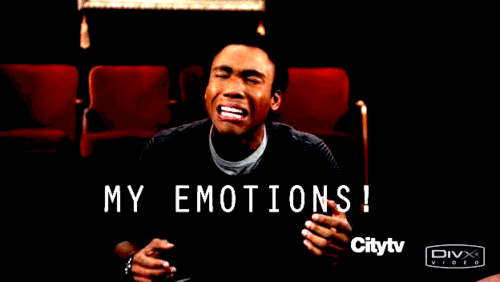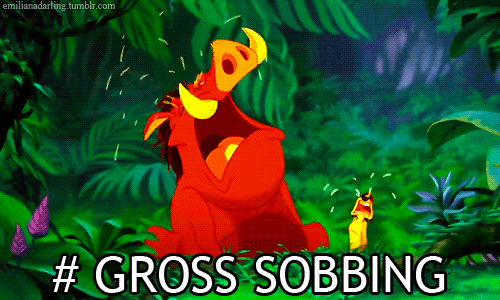Yeah, I know. I promised a full report about a month ago. But I’m a really bad Zazu.

Honestly, besides my usual delays, I just have been having a really hard time expressing my feelings for this show.
Because every time I start to talk about it, I start re-enacting the whole damn thing and praise it compulsively for several hours.
Seriously, ask my friends. It’s been a problem. I accidentally informed an entire theater about this show before I saw a production of Hamlet, mostly due to my unfortunately poor volume control.
As you can surmise from this, as well as my multiple tweets on the matter, the stage version of Hunchback of Notre Dame was incredible. I loved it. Adored it. Am OBSESSED with it.

Where to start?
First. The book. I mean that in terms of the script for the stage musical as well as the book upon which it was based. They used the songs from the family-friendly movie (except for “Guy Like You”), but make no mistake, this was not a child-friendly musical. It was more heavily based off the original Victor Hugo book than it was the movie.
That includes a thoroughly complicated, morally ambiguous Frollo, a deaf Quasimodo, and a (spoiler) heartbreaking death scene for Esmerelda.
They also heavily leaned on the literary roots of the show as the method for telling the story. Not to mention Notre Dame herself. The set of the show…well, see for yourself…
…one standing set modeled to look like Notre Dame. The show begins with the entire cast entering the stage in identical congregation robes, singing that gorgeous opening number. They tell the story Greek-chorus style, and take off their robes and don their costumes in front of you, as well as using elements of the cathedral to create scenes. The pieus become the doors to a brothel (yeah, there are brothels in this version). It’s as if the cathedral itself is telling the story.
The most effective version of this manifests in the introduction of Quasimodo himself. The actor portraying him enters the stage after the (heavily modified) opening number introduces his origin story. He walks upright, dressed in plain grey clothes similar to the robes the other players are wearing. He then sings the lyric “What makes a monster and what makes a man?” And to illustrate the riddle, he smears his face with black smudge, dons a hump for his back, ties on his overcoat, and instantly transforms his face and body into a disabled man with a “deformed” face. The respect this actor gave for the disabilities he was portraying was awe inspiring. He spoke with a deaf accent the entire show (and his work as director of the Deaf West’s Spring Awakening was evident at this point), except for when he sang without other characters on stage. Then he let his gorgeous voice belt through the rafters, as if showing the soul that lingered beneath that so few people, except Esmerelda, were able to see.
Basically, if you weren’t in tears at the end of Out There, you’re probably dead inside.

Also, Michael Arden (the actor who portrayed him) is a theatrical genius. His performance of Quasimodo was reason alone to see the show, even if the rest of it hadn’t been as great as it was. Which it freaking was.

The show was so smartly directed and so smartly written and so smartly cast. There was clearly a ton of thought that went into this show. But it was only after watching the show that I realized all this. During the show I was just feeling things. All of the things.

The show put you in the moment and made you feel every bit of it. It played on themes so relevant to today: prejudice, human weaknesses, and the “deformities” that define us all. Instead of neatly answering the question of who the “monster and man” were, as the movies does (which I still adore), it throws the question right back at us. “And we wish we could leave you a moral,” the greek chorus lamented. “Like a trinket you hold in your palm. But here is a riddle to guess if you can, sing the Bells of Notre Dame. What makes a monster and what makes a man?” And that’s what the show truly explores. Not the angel versus the devil, but the angel and the devil struggling to coexist in all of us. The show ends with a hopeful note, revamping the boring pop anthem that scrolled over the credits of the Hunchback movie into a truly profound and hopeful ballad. It made the (actually) beautiful lyrics soar poignantly. “Someday when we are wiser/when the world’s older/when we have learned.”
The reviews I read were surprisingly mixed. It thought that the storytelling convention was too “childish” for the darker themes it was exploring, but I think the “balladeer” take on the narration felt tonally appropriate for a show based on a classic novel. Of course, as I rave about it, there were flaws to the show. Some of the new numbers were a little lackluster (especially the Act 1 closer), the choreography (both fight and dance) looked like it came out of a low-budget high school production, they could really do so much more with the “Hellfire” number (although Patrick Page’s performance does stand very well on its own), and I just wish they had made an effort to have one named female character who wasn’t a giant MacGuffin for every male character’s sexual desires. I mean, there was one part where Esmerelda is dancing, and Frollo, Phoebus, and Quasi all turn to the audience to sing about their boners, and all I could think of was this scene from 10 Things I Hate About You:

I realize this was a flaw in the original story, and Esmerelda was a well rounded, dynamic character, but all they had to do was turn Clopin into a woman a la Rafiki in Lion King, and ta da! Bechdel Test passed, and the dynamic between Clopin and Esmerelda just got even more interesting.
But I nitpick/feminist rage for equality in media representation which so heavily influences our psyches and cultural attitudes. As per the usual.
Unfortunately, the run is over, now that I’ve told you all about this wonderful production. But I will still tell you because a) I did promise b) we’re getting a soundtrack (My nagging tweets must have worked!) and c) I have a vain and foolish hope that my small and mostly insignificant internet presence will help generate some excitement so people will buy the soundtrack and the chances of the producers changing their minds and deciding to transfer this show to Broadway will become more likely. I mean, in a theatrical climate where Disney mostly produces crowd pleasing, glitzy but emotionally bland cash cows that are basically elaborate re-treads of the more successful movies, this show is gutsy, moving, and well, it really has something important to say. I know that sounds….whatever, but I truly believe that nothing can change minds or hearts like a story can. And this is one powerful ass story.
Here’s a clip from the production that I found out YouTube, illustrating one of the great new songs, the pitch perfect (in more ways than one) Ciara Renee as Esmerelda — not to mention her fabulous costumes–, and the emotionally effective gargoyle chorus (who are unambiguously in Quasi’s head in this version…I’m telling you it’s brilliant), but, fair warning, you just can’t understand the force and emotional resonance of Michael Arden’s singing and acting unless you see it live.
So everyone, buy the soundtrack, spread the word, share this post, and maybe you’ll get to!
Someday. Maybe.






